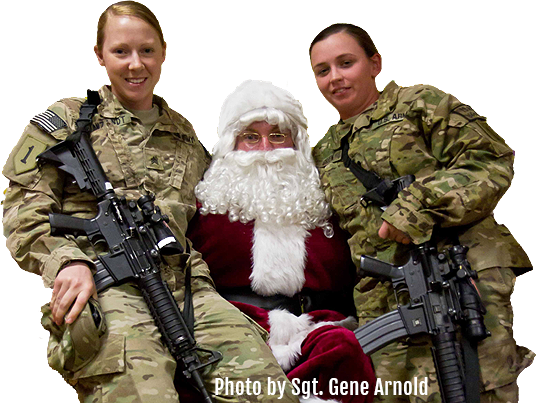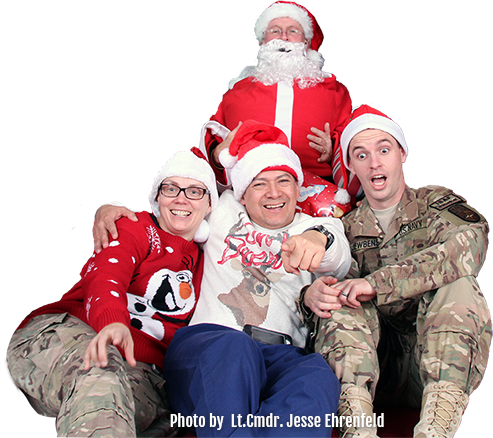 Army Sgt. Brian Calhoun attends a South Carolina Army National Guard Warrior Leadership Course at McCrady Training Center in Eastover, S.C., April 7, 2015. Courtesy photoCOLUMBIA, S.C., Aug. 10, 2015 – For years, Army Sgt. Brian Calhoun, a photojournalist in the 108th Public Affairs Detachment, South Carolina National Guard, has balanced his day-to-day civilian life and military obligations.
Army Sgt. Brian Calhoun attends a South Carolina Army National Guard Warrior Leadership Course at McCrady Training Center in Eastover, S.C., April 7, 2015. Courtesy photoCOLUMBIA, S.C., Aug. 10, 2015 – For years, Army Sgt. Brian Calhoun, a photojournalist in the 108th Public Affairs Detachment, South Carolina National Guard, has balanced his day-to-day civilian life and military obligations.
“I initially enlisted in the South Carolina National Guard while I was a senior in high school,” Calhoun said. “I would go off and train on drill weeks, which made my senior-year experience much different than my classmates’.” Calhoun initially joined Headquarters and Headquarters Battalion 1/263 Air Defense Artillery, a brand-new unit where he served for seven years as an Air Defense Artillery Command and Control System Operator-Repairer.
Taking a Break When that unit was deactivated, Calhoun was at the end of his enlistment and decided to leave the National Guard. “When my original unit deactivated, it was a good time for me to take a break from military service,” Calhoun said. “I had just completed mortuary college and was beginning my professional career as a funeral director. My new job would require me to work weekends. I didn’t want weekend drill or annual training to interfere, so I decided to take a short break.” Calhoun’s “short” break from the military ended up lasting 16 years.“I never intended to be away from the Guard for that amount of time and I always missed it,” Calhoun said. “I think once you become a soldier you never stop. A part of me was missing and I wanted to get back in the Guard to fill that huge hole.”
Back in Uniform In 2010, Calhoun decided to re-enlist and he turned to the Internet to find the perfect job. “When I found public affairs and photojournalism, I was surprised,” Calhoun said. “I didn’t know the Army had this [job], and I was certain the South Carolina National Guard didn’t have this -- or so I thought. I started making phone calls and the rest is history.” He added, “I wanted my new MOS to be more like a hobby for me. I also wanted my new military skill to benefit my employer. There isn’t a job or employer anywhere that cannot utilize a highly-trained public affairs professional skilled in writing, public speaking, photography, managing social media, or print layout and design.”Through his service as a military public affairs specialist, Calhoun said he’s “able to provide these same skills to my company and the families that we serve here in Charleston.”
Grateful for Employer’s Support As a licensed funeral director, Calhoun has worked for J. Henry Stuhr, in Charleston, South Carolina, for nearly 17 years. He currently serves as the firm’s director of information technology. “I am very fortunate to work for a company that has embraced my desire to serve my country,” Calhoun said. “They have never hesitated when I have asked for time away to attend training or to answer the call. Our duties in public affairs do not always fall inside the lines of the one weekend a month and two weeks a year scenario. The Stuhr family has never once told me no.” In 2015, Calhoun graduated from the Warrior Leader Course held at McCrady Training Center in Eastover. WLC is the initial leadership course for noncommissioned officers.During this month-long course, the specialists and corporals are being prepared for the rank of sergeant by learning skills to lead smaller groups of soldiers.
Military Leadership Training “I knew my class would be full of young specialists or newly-minted sergeants, so I could not compare myself to them physically,” said Calhoun, who is 43 years old. “But I went into the course and gave it 100 percent.” Calhoun felt that being older gave him an advantage throughout the course. “When it came to preparing a brief, giving a block of instruction, or being graded on leadership, I always received the highest marks because of my confidence,” he said. “I believe that my age and experience led to those qualities.” On top of holding down a steady civilian job, Calhoun also has a wife and two children. His family, he said, had as much to do with his re-enlistment as did his own personal desire to be back in uniform.
Freedom Isn’t Free “I wanted my kids to witness, first-hand, me sacrificing time away from home for the benefit of the greater good,” Calhoun said. “I wanted them to know that the benefits we have as Americans are not free and do not come without a cost.” The National Guard responds to natural disasters such as floods, hurricanes, forest fires, search-and-rescue operations, counter-drug operations, among others. On top of that, the National Guard has a federal mission to maintain well-trained units available for mobilization during war or national emergencies. “There is no doubt that being a soldier benefits me every day,” Calhoun said. “It gives me pride and confidence as a person and it reminds me that I am a part of something that is much bigger than myself.”
Written by Army Maj. Jamie Delk, South Carolina National Guard
Republished and redistributed by SOT by permission of DOD






